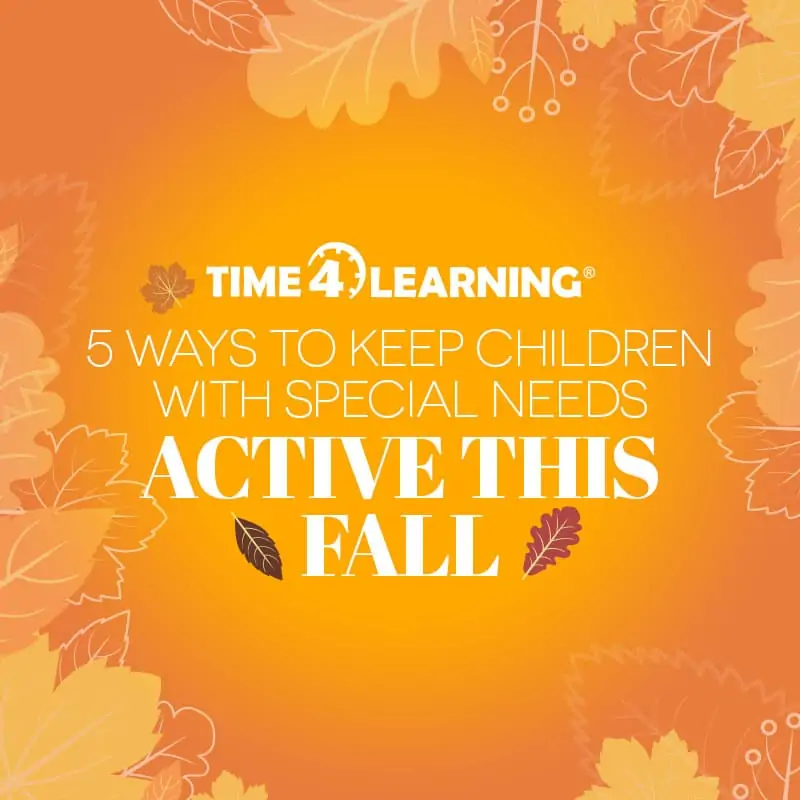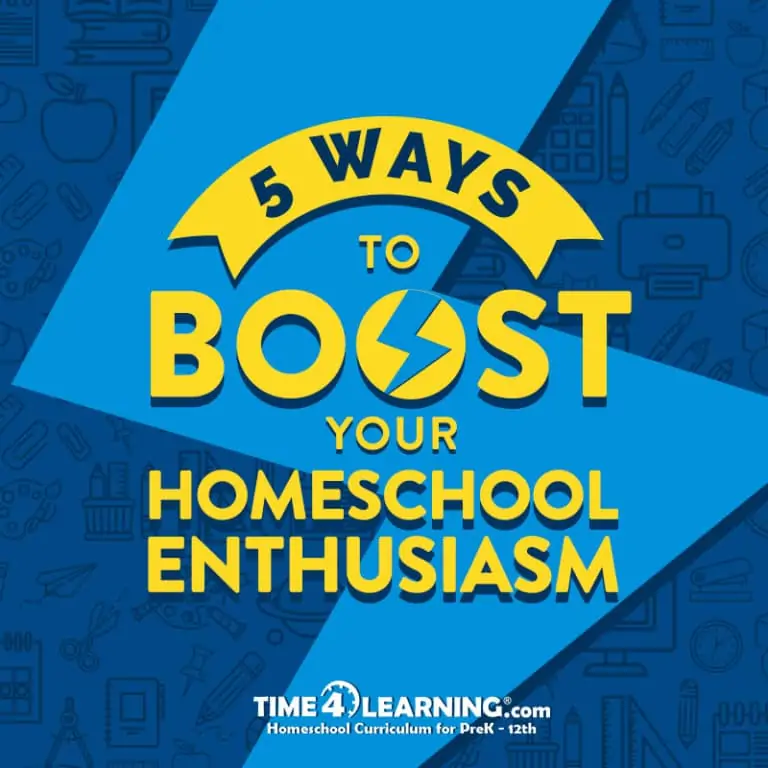5 Ways to Help Keep Children With Special Needs Active
Published:
November 25, 2019
Contributor:
The Time4Learning Team
Disclosure: This post may contain affiliate links, meaning if you decide to make a purchase via my links, I may earn a commission at no additional cost to you. See my disclosure for more info.
Healthy kids are happy kids. And, one way for kids to get healthy is by moving and moving often. Regular physical activity strengthens bones and muscles and helps keep them strong. Children with special needs sometimes have unique challenges when it comes to keeping active. Children may struggle physically, intellectually, emotionally, or perceptually. So how can you add a healthy dose of physical activity without causing additional stress?
There are a wide variety of activities specifically geared for children with special needs. Here are five great options to get your child moving. And, they’re fun too!
Sports
Playing sports is fun! And, depending upon your child’s interest and ability level, there is a sport to match. Individual sports such as bicycling, swimming, skiing, track and field, and weightlifting can empower your child. Or maybe your child prefers the comfort and camaraderie of a group effort. There are special baseball, soccer, and hockey leagues for kids who learn and play just a little bit differently.
The Special Olympics is also a popular option for children who are eight years old and up. Kids can participate in over 30 different winter and summer sports.
Participating in sports is a big self-esteem booster. Sports also helps improves coordination as well as muscle and bone strength. Kids can learn cooperation while getting the chance to socialize with others who share their unique struggles.
Aquatic Activities
Dori Maxon, PT, M.Ed. and founder of Special Needs Aquatics Program (SNAP) says, “The water is the great equalizer. It offers so many benefits including the chance to move in a gravity-reduced environment, organize and attend, play, talk, make friends, and enjoy being a child.”
The great thing about water exercise is that it works all the muscles at the same time. And, swimming lessons not only get your kids moving, but also equip them with a lifesaving skill! Water activities help children develop coordination and improve range of motion, balance, and endurance. This is especially beneficial to children on the autism spectrum who often struggle with these issues.
Your child’s unique needs don’t have hold them back from participating in physical activities. You can help them shine like Nicole Flynn, a gold medalist in synchronized swimming, who also just happens to have Down Syndrome.
Whet your child’s interest in water with a mom and me or a family swim time. Then, try some of these awesome options:
- Individual and group swimming lessons
- Aqua therapy
- Aqua aerobics
- Synchronized swimming
- Slip and slides and interactive sprinklers
- Water parks
- Free play
Nature Walks
The soothing backdrop of nature is a perfect way to help relieve the stress and anxiety that children with special needs often feel. For parents, too!
Going on a nature walk together is a wonderful way to get a healthy dose of fresh air and stretch your legs. The myriad scents, sounds, and scenery will strengthen sensory processing skills while sparking your child’s curiosity about the world around them. Also, children who struggle with autism often have difficulty adjusting to change. Enter the unpredictability of mother nature. So you can give your kids practical experience dealing with the changing seasons and weather patterns while keeping the moving at the same time!
If you need a little inspiration, try visiting some of these awesome spots:
- Nature preserves
- Wildlife sanctuaries
- Nature trails
- Zoos
- Parks
- Rail trails
And, a simple nature walk can improve interest and learning across the curriculum. So, consider adding a little bit of real-world science to your day, beach and ocean, mountain, pond, or forest unit studies.
Even wheelchair-bound kids can benefit from the fascinating change in scenery.
Music, Movement, and Balance Activities
Adding activity into your child’s day can be as simple as going to the playground. Or, how about taking a walk or a bike ride around the neighborhood? Rainy day? No worries! Try putting on some lively music and encouraging your child to move and dance to the beat. Add some silky scarves to swing and twirl to strengthen gross motor movement. Grab your mats and do yoga together. How about a hula hoop-a-thon? Yes, it’s that simple!
Children with special needs sometimes struggle with balance and coordination. Enter the Spooner Board–a popular indoor/outdoor balance board. Shaped like a skateboard without wheels, kids can sit, stand, or lie while they rock, pivot, and spin.
Do you have avid video gamers? YouTube fans? There are fitness games and videos to match every ability. Maybe your kids are up for a parents vs kids challenge!
Some other great options are:
- Jumping on a trampoline
- Walking in moon shoes
- Jumping rope
- Rock climbing
- Flying a kite
- Playing tennis or badminton
- Playing bean bags
- Kayaking
Interacting with Animals
Most children love animals. This is key! You can tap into your child’s curiosity and love of animals while adding in some physical activity at the same time.
Animal shelters are always in need of an extra pair of hands. Many have a dog walking program and will happily pair you and your child up with a friendly canine walking partner. You can also consider volunteering to feed and groom the animals at a local farm. Farmers will also appreciate help corralling slow moving cows and mischievous goats back into their stalls in the evenings. Are your kids up for the challenge?
How about a little puppy love? The Seeing Eye program could be the perfect match. Raising a seeing eye puppy alongside your child will definitely keep your both moving.
Another popular option is horseback riding. Kids are fascinated by these beautiful, grand animals and even though your child is sitting, many different muscles are working hard.
So as you can see, there are oodles of fun ways to incorporate physical activity into your homeschool program. It’s simply a matter of finding the perfect match or two or three. As long as your kids are having fun, you might not be able to slow them down. That’s definitely a win-win!








